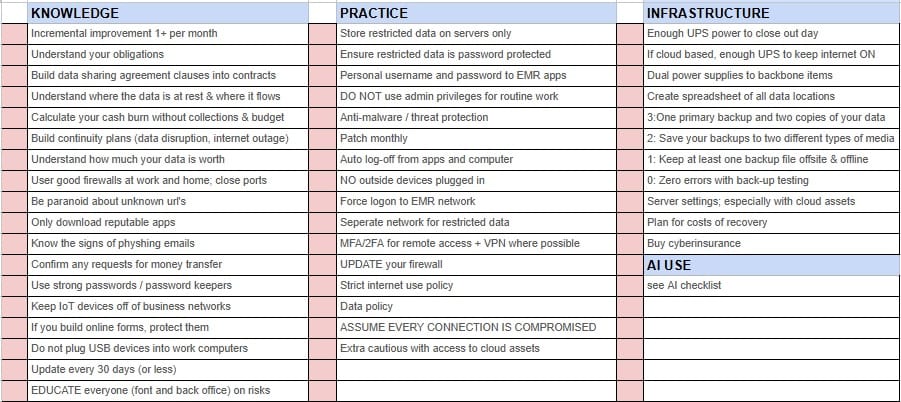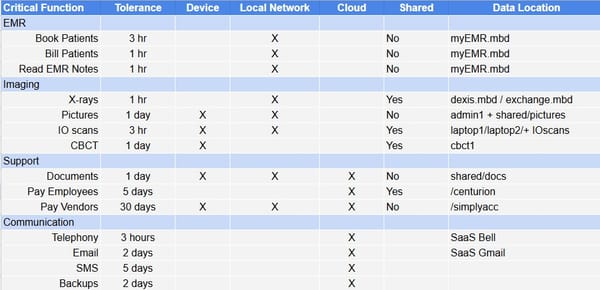Cybersecurity checklist for your office

Cybersecurity Checklist for Healthcare Practices
A comprehensive checklist to help healthcare providers maintain robust cybersecurity standards and protect patient data.
Knowledge
- Incremental improvement: aim for at least one security update per month.
- Understand your obligations and where your data is stored and flows.
- Build data sharing clauses into contracts.
- Calculate your cash burn without collections and set budgets for cybersecurity.
- Educate all staff, including front and back office, on cybersecurity risks.
- Calculate your cash burn without collections and set budgets for cybersecurity.
- Build continuity plans (data disruption, internet outage)
- Understand how much your data is worth
- User good firewalls at work and home; close ports
- Be paranoid about unknown url's
- Only download reputable apps
- Know the signs of physhing emails
- Confirm any requests for money transfer
- Use strong passwords / password keepers
- Keep IoT devices off of business networks
- If you build online forms, protect them
- Do not plug USB devices into work computers
- Update every 30 days (or less)
Practice
- Store restricted data on secure servers with personal username and password access.
- Ensure restricted data is password-protected and do not use admin privileges for routine work.
- Personal username and password to EMR apps
- DO NOT use admin privileges for routine work
- Anti-malware / threat protection
- Patch monthly
- Auto log-off from apps and computer
- NO outside devices plugged in
- Force logon to EMR network
- Seperate network for restricted data
- MFA/2FA for remote access + VPN where possible
- UPDATE your firewall
- Strict internet use policy
- Data policy
- ASSUME EVERY CONNECTION IS COMPROMISED
- Extra cautious with access to cloud assets
Infrastructure
- Enough UPS power to close out day
- If cloud based, enough UPS to keep internet ON
- Dual power supplies to backbone items
- Create spreadsheet of all data locations
- 3:One primary backup and two copies of your data
- 2: Save your backups to two different types of media
- 1: Keep at least one backup file offsite & offline
- 0: Zero errors with back-up testing
- Server settings; especially with cloud assets
- Plan for costs of recovery
- Buy cyberinsurance




